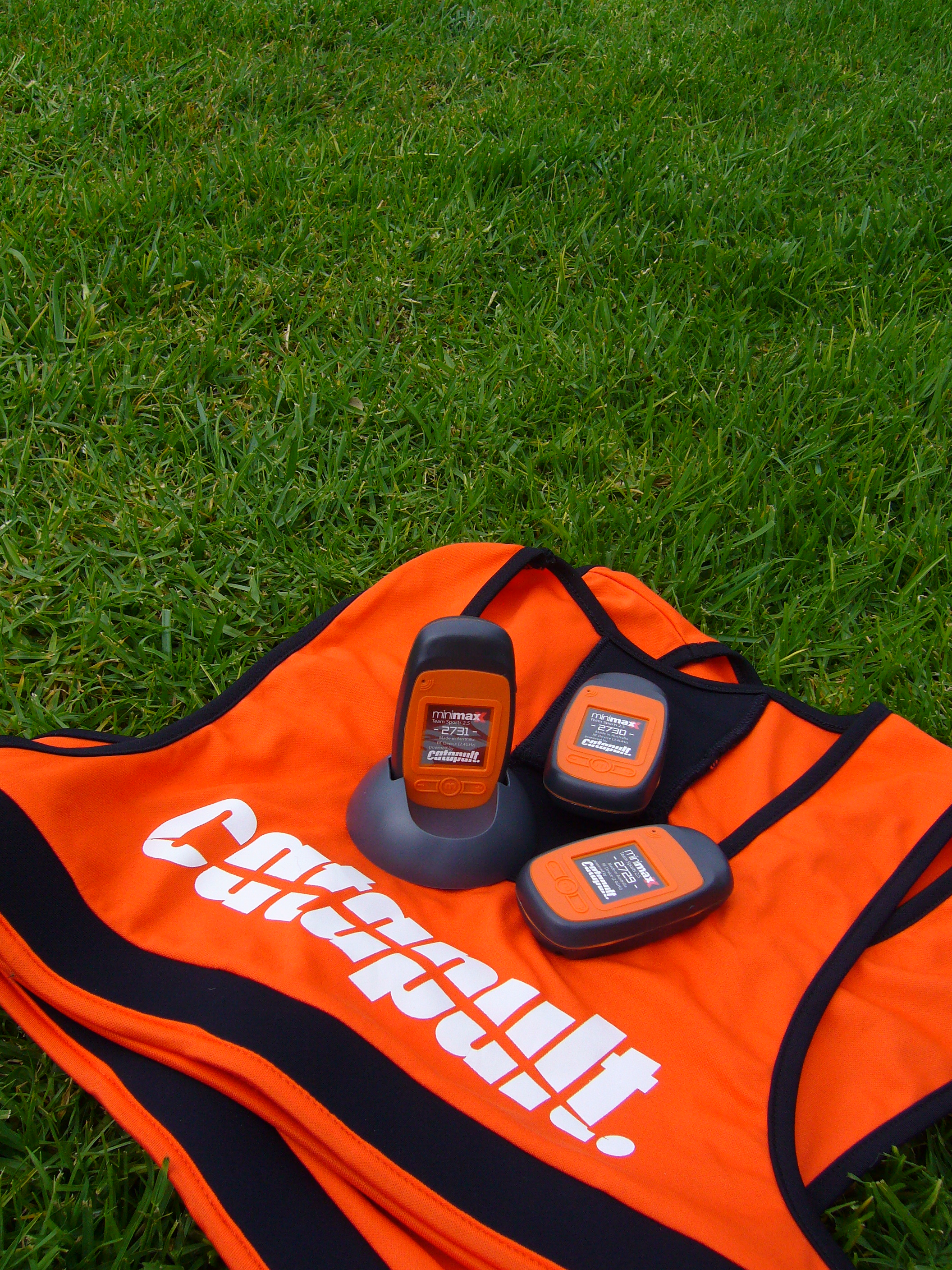The Hockeyroos take on Korea earlier this year. Image: Flickr / Chris J. Bartle
What do Newcastle FC, the Hockeyroos, Melbourne Storm, Sydney Swans and the gold medal-winning British Rowing team have in common?
They could soon be using our technology to track their athletes.
As part of our new Digital Productivity and Services Flagship we have signed an agreement with Melbourne-based company Catapult Sports who currently lead the world in GPS athlete tracking devices.
CSIRO’s WASP technology will soon be integrated into Catapult Sport’s athlete tracking devices. Credit: Catapult Sports
Our wireless technology will soon be integrated into Catapult’s existing athlete tracking devices, giving coaches the ability to monitor their athletes more accurately in indoor and GPS poor environments.
Athlete tracking systems are valuable for many aspects of sports including game tactics, comparing athlete performance, fitness analysis and perfecting athlete movement.
The tracking devices are hidden in a pocket at the back of a lightweight garment worn under the athlete’s clothing. They collect vital data during a match or training session such as velocity, heart rate, distance and acceleration and feed this into a system where coaches can see the results in real time.
Catapult Sports already have some of the world’s best sports teams using their devices, including almost all English Premier League teams, NRL, AFL, American football and basketball and international hockey, rowing and sailing teams. You can check out the full list here.
Even 2012 Brownlow medal winner and Essendon captain Jobe Watson is using the technology.
The technology called WASP (Wireless Ad-hoc System for Positioning) uses wireless signals rather than GPS and satellites for tracking.
Even 2012 Brownlow medal winner and Essendon captain Jobe Watson is loving the Catapult technology. The tracking devices are hidden in a pocket at the back of the garment just above the shoulder blades. Image: Michael Klein
Originally developed for the mining industry to track people and machinery moving around in underground mines to improve safety, WASP is designed to track people or objects indoors where you can’t get a GPS signal or in areas where there is signal interference.
Whilst GPS has been the best way to track people and objects for many years, you may have noticed that in some situations it just doesn’t work.
Have you ever been driving in the city, when your TomTom gets confused and sends you down in the wrong street? This happens because the GPS signal is reflected off the tall buildings delaying the signal reaching the satellite.
The same happens indoors in velodromes or even in open air stadiums. This error can put the accuracy of the GPS off by a few meters which isn’t helpful for sports applications.
Now we’ve solved the challenge of tracking athletes in any environment, we’re looking forward to box seat tickets for the staff (unlikely, but worth a try).
What an achievement, seeing a little piece of our technology helping international sports teams to improve their performance and game strategy whether on the field, track or court.
Learn more about the WASP technology on our website.





8th January 2014 at 4:29 pm
I think this wireless tracking device is such a useful device for every coach to monitor their athletes.